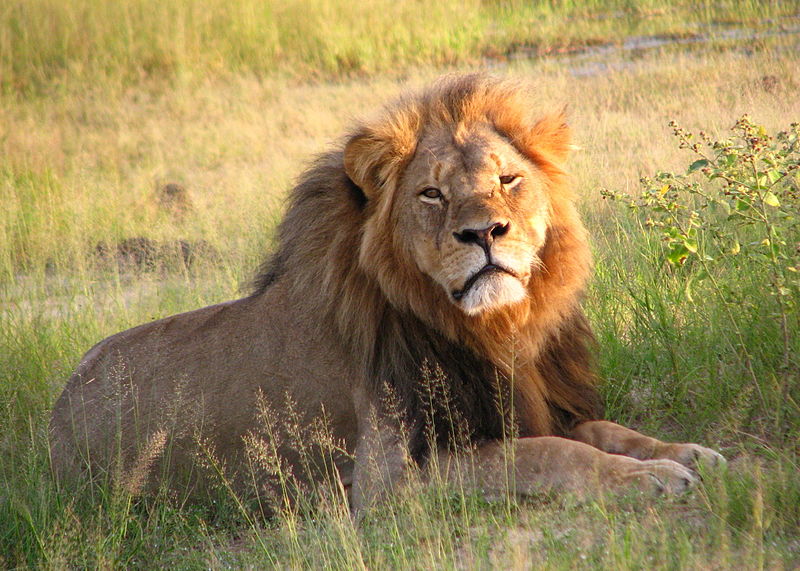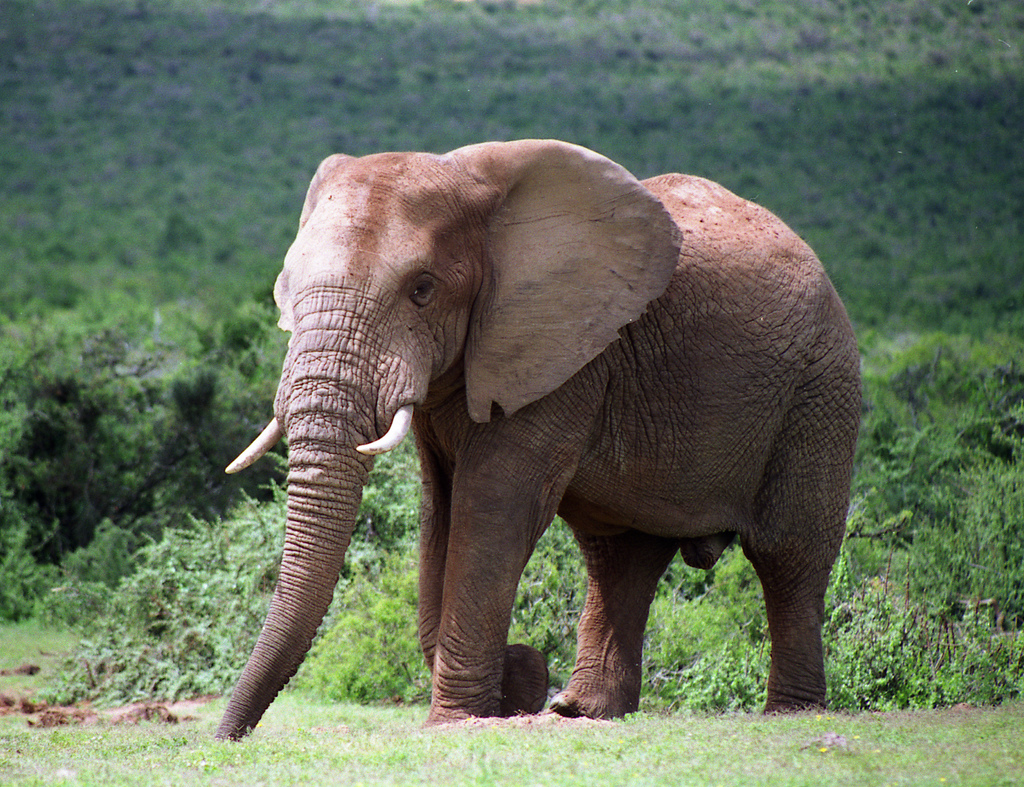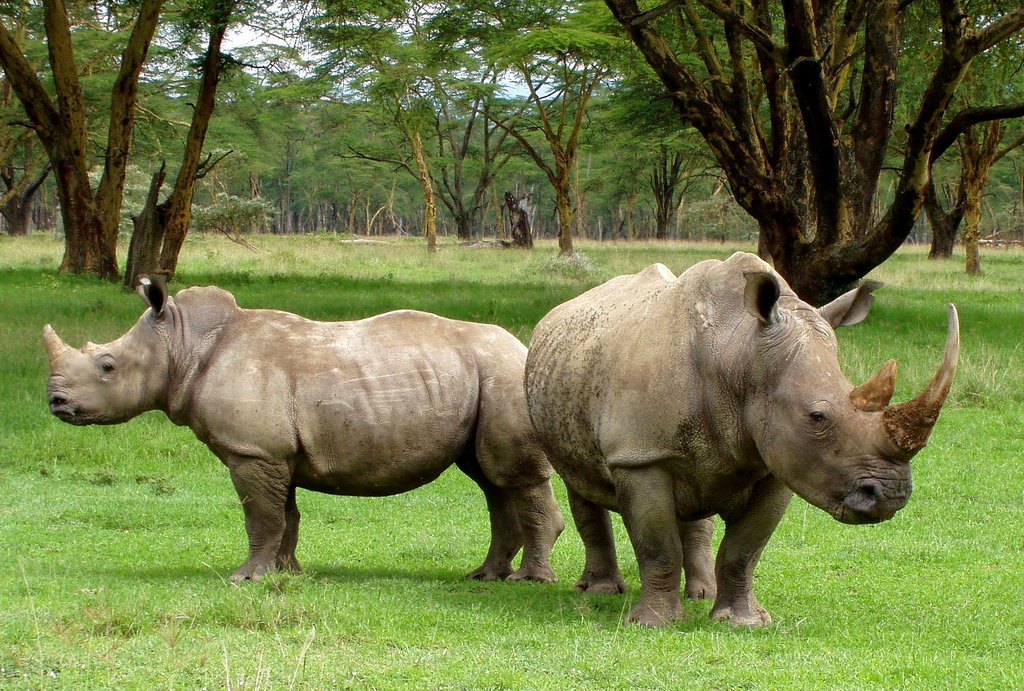Cecil the Lion, a resident of Zimbabwe's national park, and an national icon was poached and killed this week. Media reports in the Guardian, Wall Street Journal and elsewhere have identified American Walter Palmer, a dentist from Minneapolis, MN as the poacher. He is alleged to have lured Cecil from the safety of the national park to kill him. Two of Palmer's local accomplices are already in custody. Zimbabwe authorities now actively seeking Palmer in connection with this incident.
We urge the Secretary Of State John Kerry and the Attorney General Loretta Lynch to fully cooperate with the Zimbabwe authorities and to extradite Walter Palmer promptly at the Zimbabwe government's request.
Response to Petition
A Response to Your Petition Regarding Cecil the Lion:
Thank you for adding your name to a petition concerning Cecil the Lion.
The issues you've raised have received a great deal of public attention. But because they’re connected to an ongoing investigation, we can’t comment on those specific issues here. As the We the People Terms of Participation explain, to "avoid the appearance of improper influence, the White House may decline to address certain procurement, law enforcement, adjudicatory, or other matters properly within the jurisdiction of federal departments or agencies, federal courts, or state and local government." You can read the full Terms of Participation to get a better sense for why We the People is designed the way it is, and to learn more about the guidelines for use.
So in this case, while we can’t address any particular enforcement matters, we can highlight some of the work you might not have realized the Administration has been doing to protect wildlife around the world.
Let’s start with the African lion -- a symbol of majesty, courage, and strength. Last fall, in recognition of the serious threats to the survival of the African lion, the Department of Interior U.S. Fish and Wildlife Service proposed listing the species as “threatened” under the Endangered Species Act -- which would strengthen U.S. protections for lions, including increased restrictions on international trade involving the United States. As U.S. Fish and Wildlife Service Director Dan Ashe said then, "It's up to all of us, not just the people of Africa, to ensure that healthy, wild populations continue to roam the savanna for generations to come." You can get more information about the Service's proposed rule -- which was published in the Federal Register last fall -- here.
And when President Obama was in Kenya this past July, he announced the latest in a series of steps the U.S. is taking to stop the deadly practice of wildlife trafficking.
Poachers kill one elephant about every 15 minutes -- and in the last five years, poachers killed 60 percent of the elephant population in Tanzania. Wildlife trafficking has also brought northern white rhinos -- among other species -- to the brink of extinction. Wildlife goods, such as ivory, have been linked to networks of organized and ruthless wildlife traffickers and militant groups. Such networks cause instability and insecurity around the world. During his trip to Kenya, the President announced a proposed rule that would prohibit most interstate commerce of African elephant ivory, and would strengthen restrictions on commercial exports and the import of elephant-hunting trophies. Combining that with the other actions taken under the National Strategy for Combating Wildlife Trafficking, issued following the President's 2013 Executive Order on Combating Wildlife Trafficking, this new proposed rule would create a near-total ban on domestic commercial trade of African elephant ivory.
Our government -- including all 17 U.S. government entities that participate in the President’s Task Force on Wildlife Trafficking -- is exercising leadership in addressing the serious and urgent conservation and global security threat of wildlife trafficking. Here are just a few examples of our efforts.
First, we’re strengthening enforcement here at home. Strong law enforcement is critical to stopping wildlife traffickers and deterring others from engaging in wildlife crime. The U.S. Department of Justice -- working with the U.S. Fish and Wildlife Service, the National Oceanic and Atmospheric Administration, the Department of Homeland Security, and other investigative agencies -- have indicted, prosecuted, and secured convictions in numerous cases of trafficking of internationally protected species, including their parts and products, such as elephant ivory, rhinoceros horn, narwhal tusk, tigers, turtles, and reptiles. Operations like the U.S. Fish and Wildlife Service-led Operation Crash have led to significant prison terms and fines for those involved, as well as the forfeiture of millions of dollars of wildlife products, cash, and other assets.
We’re also strengthening enforcement abroad. In 2014, capacity-building efforts centered on training programs for foreign counterparts in Southeast Asia, across Africa, and Latin America, are strengthening legislative, investigative, prosecutorial, and judicial processes to enforce wildlife laws. That's because, in order to respond effectively to wildlife trafficking, most countries need to enact stronger laws while enhancing their investigative, law enforcement, and judicial capacity to stem the corruption and illicit flow of money associated with wildlife trafficking. In 2014, the Department of State, U.S. Fish and Wildlife Service, the U.S. Agency for International Development (USAID), and other agencies trained over 1,900 law enforcement officials, helping more than 30 countries combat wildlife trafficking more effectively, leading to more than 500 poachers and wildlife traffickers being arrested in 2014 alone.
We are working with communities to protect parks, manage forests, improve land use and build conservation enterprises. USAID partners with the community conservancies to protect wildlife while promoting economic growth and strengthening peace and security. These programs also provided an opportunity to improve international cooperation on wildlife trafficking investigations, elevate wildlife trafficking as a serious crime, and build cross-border cooperation. We are also supporting the development of several regional Wildlife Enforcement Networks, and are building an innovative partnership to disrupt wildlife trafficking in international transportation and logistics supply chains. USAID also supports innovation to scale impact through its Wildlife Crime Technology Challenge, which sources innovative science and technology-based solutions to detect transit routes, strengthen forensic evidence, reduce consumer demand, and tackle corruption.
We’re reducing demand for illegally traded wildlife at home and abroad. That has meant destroying more than seven tons of ivory that was seized by law enforcement officers. The two highly publicized ivory crush events, the most recent of which was held this June in New York City’s Times Square, sent a global message that ivory must be rendered valueless as a commodity. We have also supported demand reduction programs like the U.S. Embassy Hanoi-led Operation Game Change to reduce demand for illegal rhino horn.
Finally, we’re expanding cooperation and commitment. Just last week, during Chinese President Xi Jinping's State visit, the United States and China committed to enact nearly complete bans on ivory import and export (the United States has already done this), as well as significant and timely restrictions on the import of ivory as hunting trophies, and significant and timely steps to halt the domestic commercial trade of ivory. The United States and China will also cooperate with other nations in a comprehensive effort to combat wildlife trafficking.
Read more from the Council on Environmental Quality’s Christy Goldfuss and National Economic Council's Jeff Zients here. And learn more about the announcements surrounding the recent Chinese State visit here.
Another avenue for protecting our endangered wildlife is the Trans-Pacific Partnership (TPP). Among other provisions, the TPP would put in place environmental standards that expand partner countries' obligations to enforce their own conservation laws and step up their enforcement of illegal wildlife trafficking. In fact, here are ten animals the trade deal would help protect.
Hear more from Cathy Novelli, Under Secretary of State for Economic Growth, Energy and the Environment; Dan Ashe, Director of the U.S. Fish and Wildlife Service; and John Cruden, Assistant Attorney General of the United States for the Environment and Natural Resources. Earlier this year, the three teamed up to lay out a roadmap for the work their respective teams and other U.S. agencies on the Presidential Task Force on Wildlife Trafficking are doing to fight poaching and illegal wildlife.
Want to learn more about the Administration’s continuing activities to combat wildlife trafficking -- and keep up-to-date on those activities? Here are the government resources you should visit and bookmark:
http://www.fws.gov/international/wildlife-trafficking/
http://www.justice.gov/enrd/wildlife-trafficking
http://www.state.gov/e/oes/ecw/wlt/
http://www.state.gov/j/inl/focus/combatting/environment/
https://www.usaid.gov/biodiversity/wildlife-trafficking
Thank you for using We the People.
--The We the People Team
Tell us what you think about this response and We the People.






